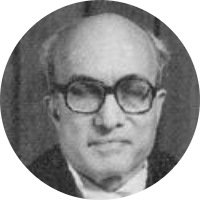M.H. Kania

M.H. Kania
Former Chief Justice of India
Assumed Office13th Dec, 1991
Retired On17th Nov, 1992
Previously
Judge of the Supreme Court May 1st 1987 - December 13th 1991
Chief Justice of the Bombay High CourtJune 1986 - April 30th 1987
Permanent Judge of the Bombay High CourtNovember 2nd 1971 - June 1986
Additional Judge of the Bombay High CourtNovember 4th 1969 - November 1st 1971
Profile
Madhukar Harilal Kania enrolled as an advocate on November 18th 1949. He mostly practised in civil suits and commercial matters at the Bombay High Court and the Bombay City Civil Court. He was appointed as the Assistant Government Pleader for the State of Maharashtra in the City Civil Court Bombay on December 5th 1964 and later became the Government Pleader on January 16th 1967, till 1969.
He started as an Additional Judge of the Bombay High Court with his appointment on November 4th 1969. He became a permanent Judge, Bombay High Court by 1971 and was later made the Chief Justice of the Bombay High Court in June 1986. He was then elevated as the judge of the Supreme Court on May 1st 1987, and later as the 23rd Chief Justice of India on December 13th 1991, succeeding Justice K.N. Singh. After serving for almost a year as the Chief Justice of India, he retired on November 17th 1992.
During his term of around five years at the Supreme Court, Justice M.H. Kania was a part of 454 benches and authored 107 judgments.
Justice Kania worked on cases concerning constitutional law, property law, direct-taxation, service matters, and tenancy matters.
Notable Judgements
A nine-judge Bench delivered one of the most pivotal cases relating to reservations in India: Indra Sawhney v. Union of India. Chief Justice M.H. Kania was a part of the majority. The judgment introduced the “creamy layer” concept and their exclusion from reservations. The judgment considered caste as a marker to identify the social backwardness of OBCs. Economic backwardness could not be the only criteria- the economic and educational backwardness had to be because of the social backwardness, for a class to be under OBCs. Reservations in government services for OBCs was upheld based on these parameters, but the judgment also said that reservations in promotions were not allowed.
In MC Mehta v. State of Tamil Nadu, was public interest litigation concerning child labour. Relying on Articles 39 and 45 of the Constitution, Justice Kania said that children could not be employed in factories dealing with hazardous items. Further, even if grown-up children wanted to work because of unfortunate economic conditions, they could only be involved in packaging and not manufacturing - provided that the children were kept away from the manufacturing area. He also gave directions in the judgment to improve the quality of life of children employed in factories.
